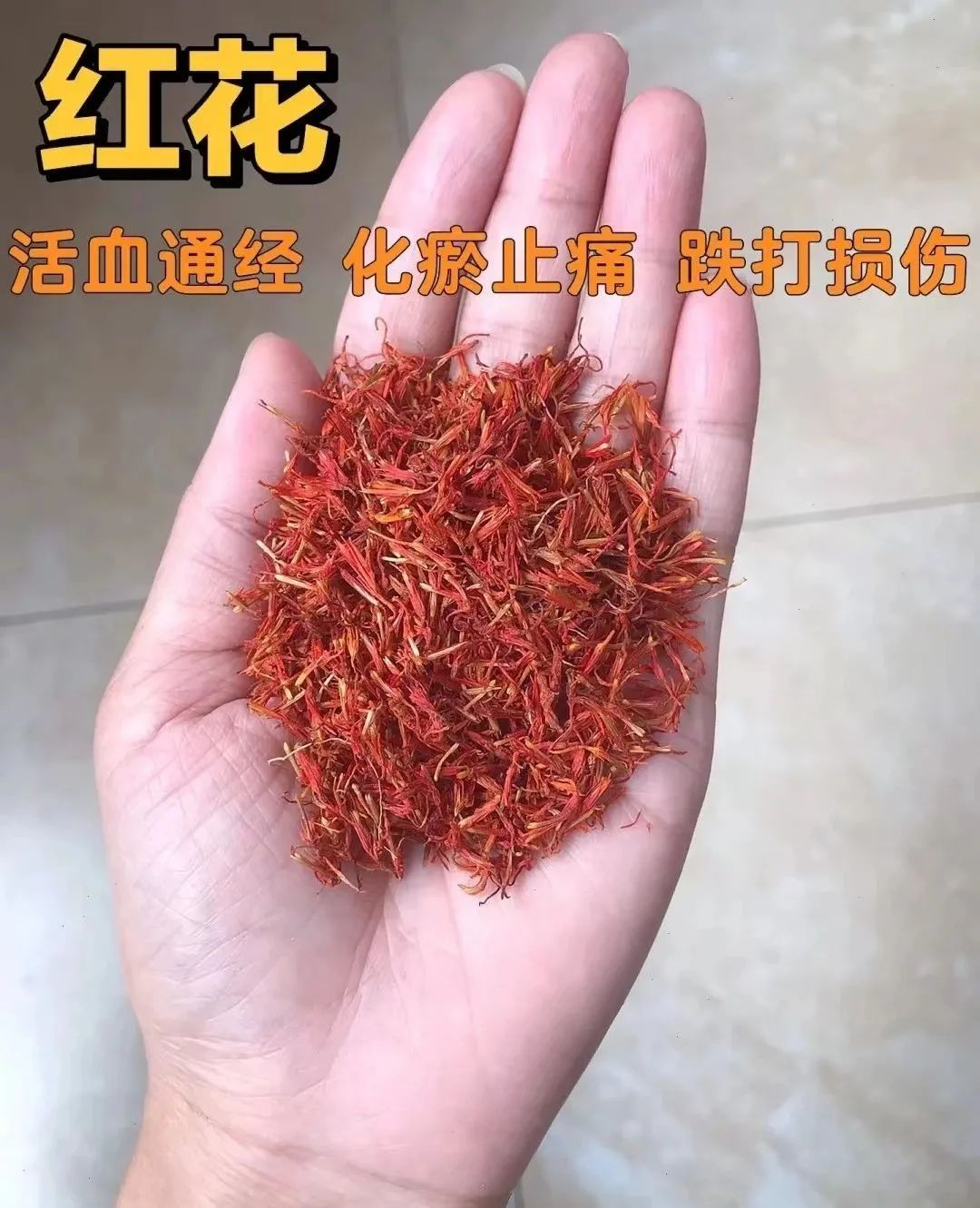
Safflower (Honghua) is the dried flower of the plant from the Asteraceae family. It is harvested in summer when the flowers change from yellow to red, taking care not to damage the base ovary. The flowers are cleaned of impurities and dried in the shade or with gentle heat; the best quality is soft and deep red. (Harvesting should be done in the morning when the dew has not dried and the bracts are soft, but not too early.) It is widely cultivated in Northeast China, North China, Northwest China, as well as in Shandong, Zhejiang, Guizhou, Sichuan, and Tibet.
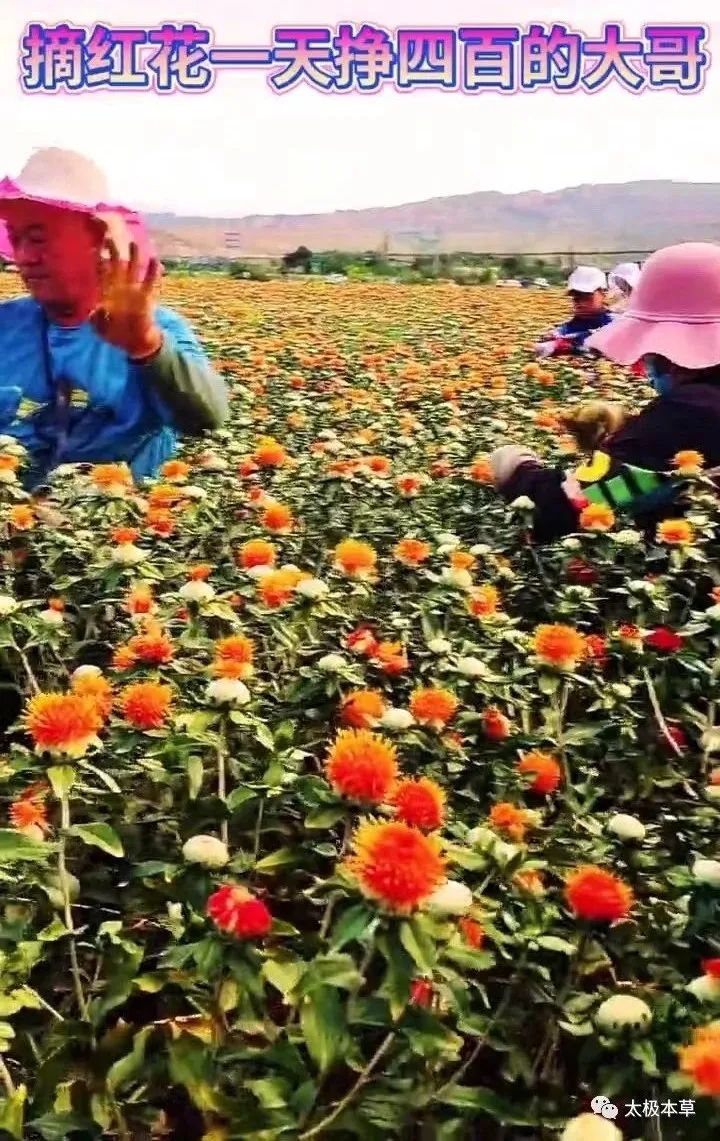
Traditional Chinese Medicine (TCM) considers safflower to have a spicy flavor and a warm nature. It is associated with the Heart (Xin) and Liver (Gan) meridians. It invigorates blood circulation and alleviates pain. It is indicated for menstrual disorders, dysmenorrhea, postpartum abdominal pain due to blood stasis, chest pain due to phlegm accumulation, traumatic injuries, joint pain, stroke sequelae, and rashes.

【Dosage and Administration】 For internal use: decoction, 3-10g. 0.9-1.5g is used to nourish Qi and blood. A small amount of safflower can be added to warming tonics to treat postpartum dizziness, lightheadedness, and cold Qi. 12-15g is used for coronary heart disease and angina, leveraging its ability to break blood stasis and promote circulation.
【Caution】 Not suitable for pregnant women.
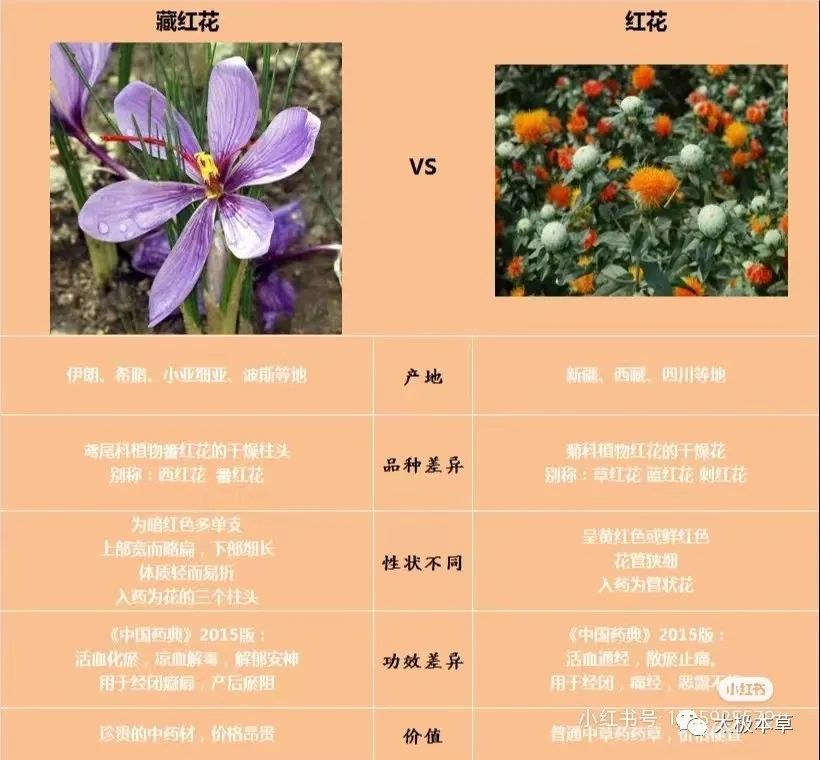
Modern research indicates that:
Safflower has cardiac inhibitory effects, antihypertensive effects, analgesic and sedative properties, can cause vasodilation, and increase blood flow in ischemic areas of the brain, thereby reducing cerebral edema. Safflower can dilate blood vessels, invigorate blood circulation, and its mechanism mainly involves vasodilation, with a weak direct vasoconstrictive effect, as well as significant anticoagulant and estrogen-like effects, which can stimulate the uterus.
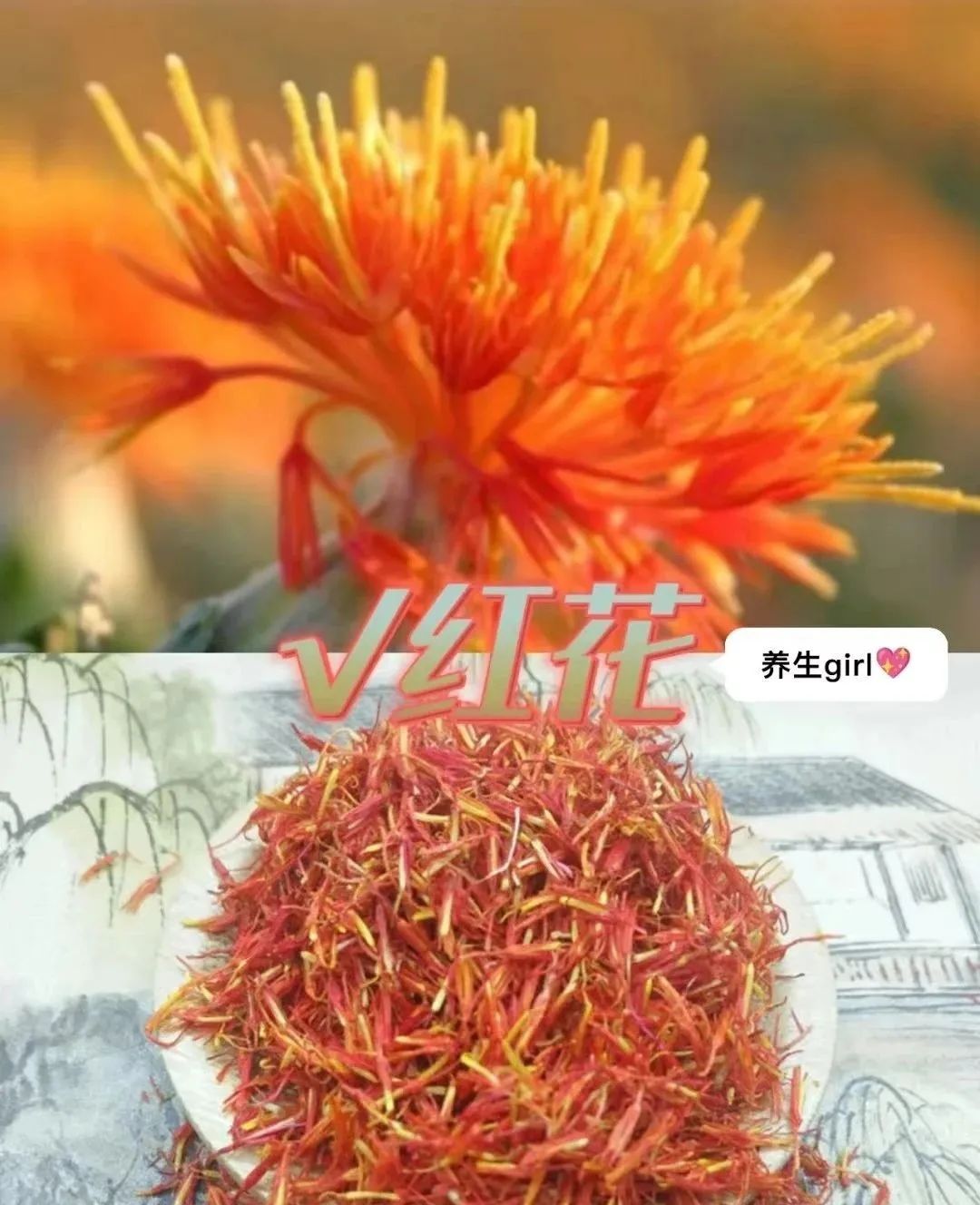
1、Invigorating Blood and Promoting Circulation:
The primary effect of safflower is to invigorate blood and promote circulation, commonly used for menstrual disorders, tumors, difficult labor, stillbirth, postpartum lochia retention, and pain due to blood stasis, especially for cold-type amenorrhea, dysmenorrhea, and pain due to blood stasis.
2、Reducing Swelling and Alleviating Pain:
Safflower has a fragrant aroma and can disperse blood stasis and alleviate pain, reducing local swelling. It is generally used for treating traumatic injuries, abscesses, and swelling and pain, effective for both internal and external use.
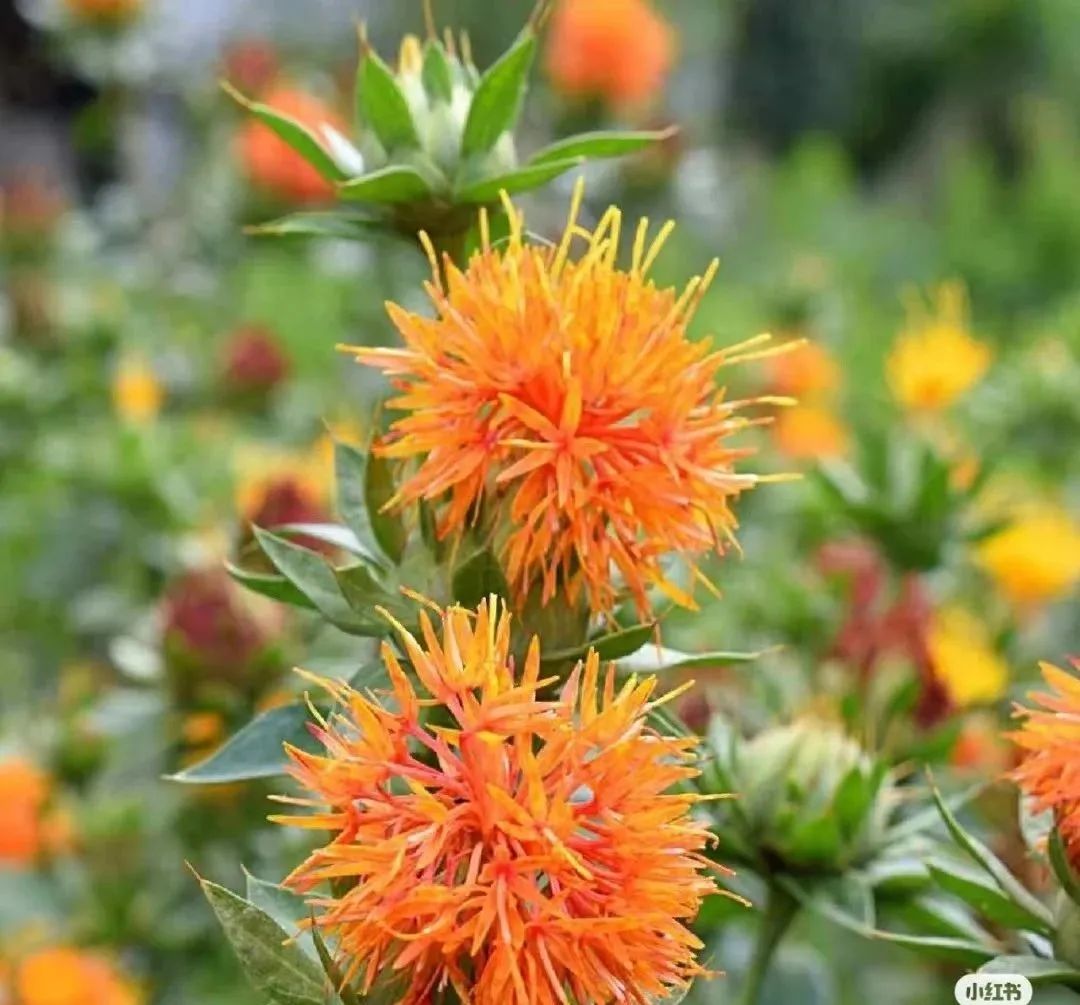
3、Adjuvant Treatment for Cardiovascular Diseases:
Safflower enters the Heart meridian, and moderate consumption can increase coronary blood flow, improving symptoms of palpitations, ischemia, and hypoxia. It can treat chest pain and heartache, such as coronary heart disease and angina, and can also treat stroke sequelae and limb paralysis, providing auxiliary antihypertensive effects for patients with hypertension.
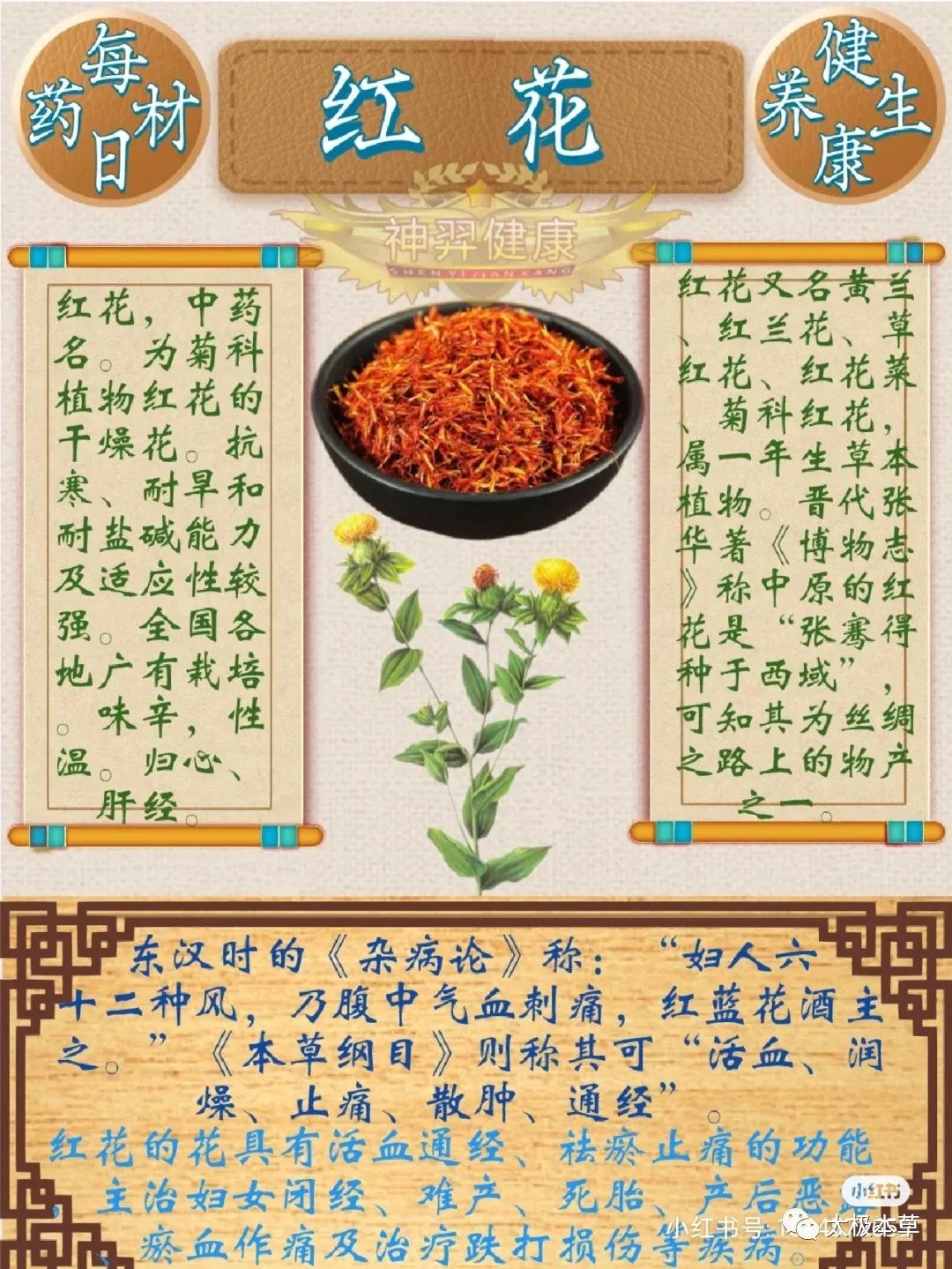
The specific therapeutic effects of safflower are as follows:
1、Treatment for contusions and sprains causing subcutaneous hemorrhage and swelling:
Soak dried safflower in 40% alcohol at a ratio of 1% for one week. Once the safflower turns yellow-white and settles at the bottom of the bottle, filter it with gauze. When using, dilute with an equal amount of distilled water, soak cotton, and apply externally, bandaging it. Heating enhances the effect.
2、Safflower Green Tea Drink:
Ingredients: Safflower, green tea, 5g each.
Preparation: Clean safflower and green tea, remove impurities, place in a covered cup, pour boiling water, cover, and filter after steeping.
Effect: Invigorates blood circulation, nourishes the liver, brightens the eyes, and lowers blood lipids.
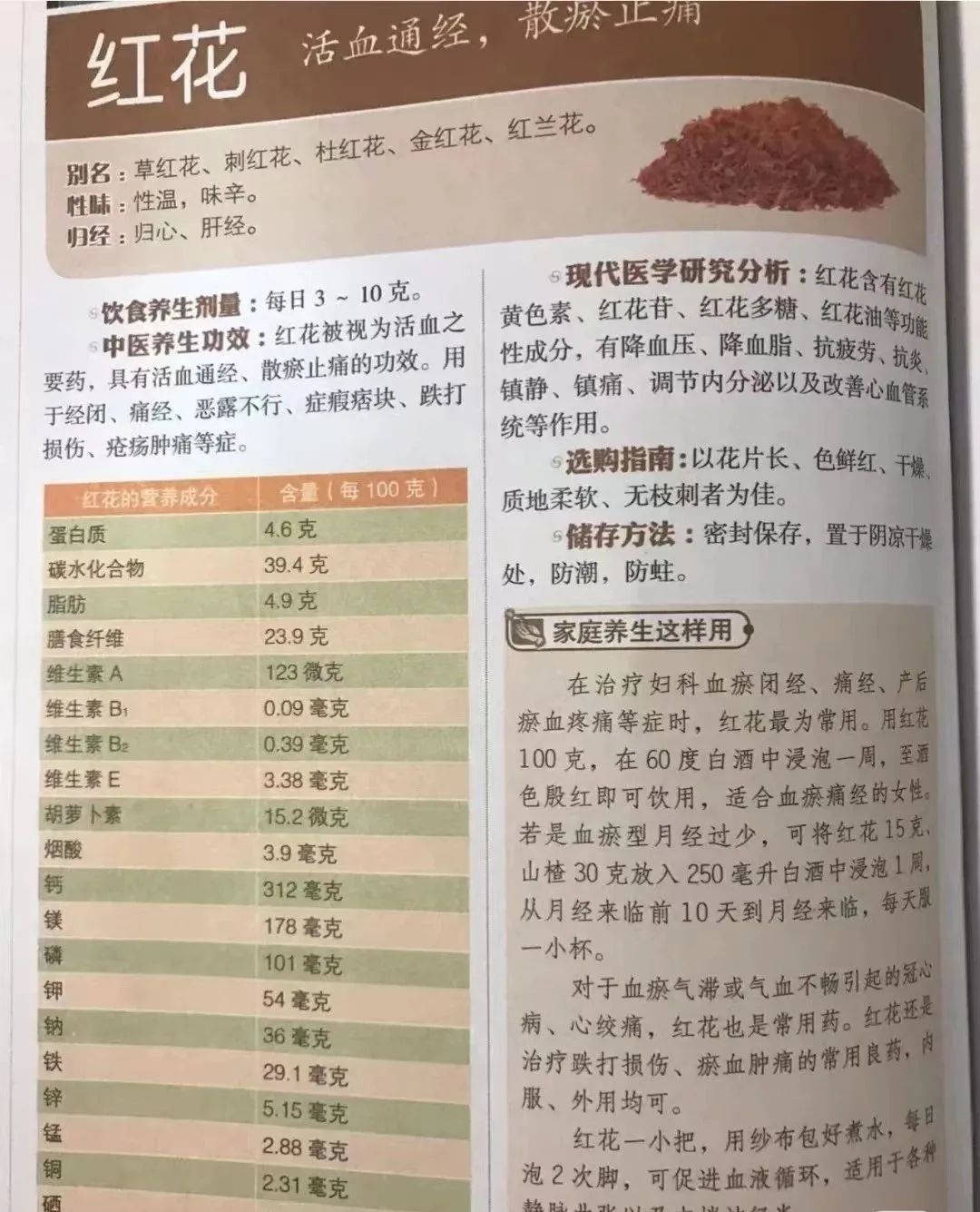
3、Peach Kernel and Safflower Honey Drink:
Ingredients: Safflower 10g, peach kernel 15g, honey 20g.
Preparation: Clean safflower and peach kernel, remove impurities, place in a clay pot, add appropriate water, simmer over medium heat for 20 minutes, strain, and mix in honey.
Effect: Treats sprains and contusions.
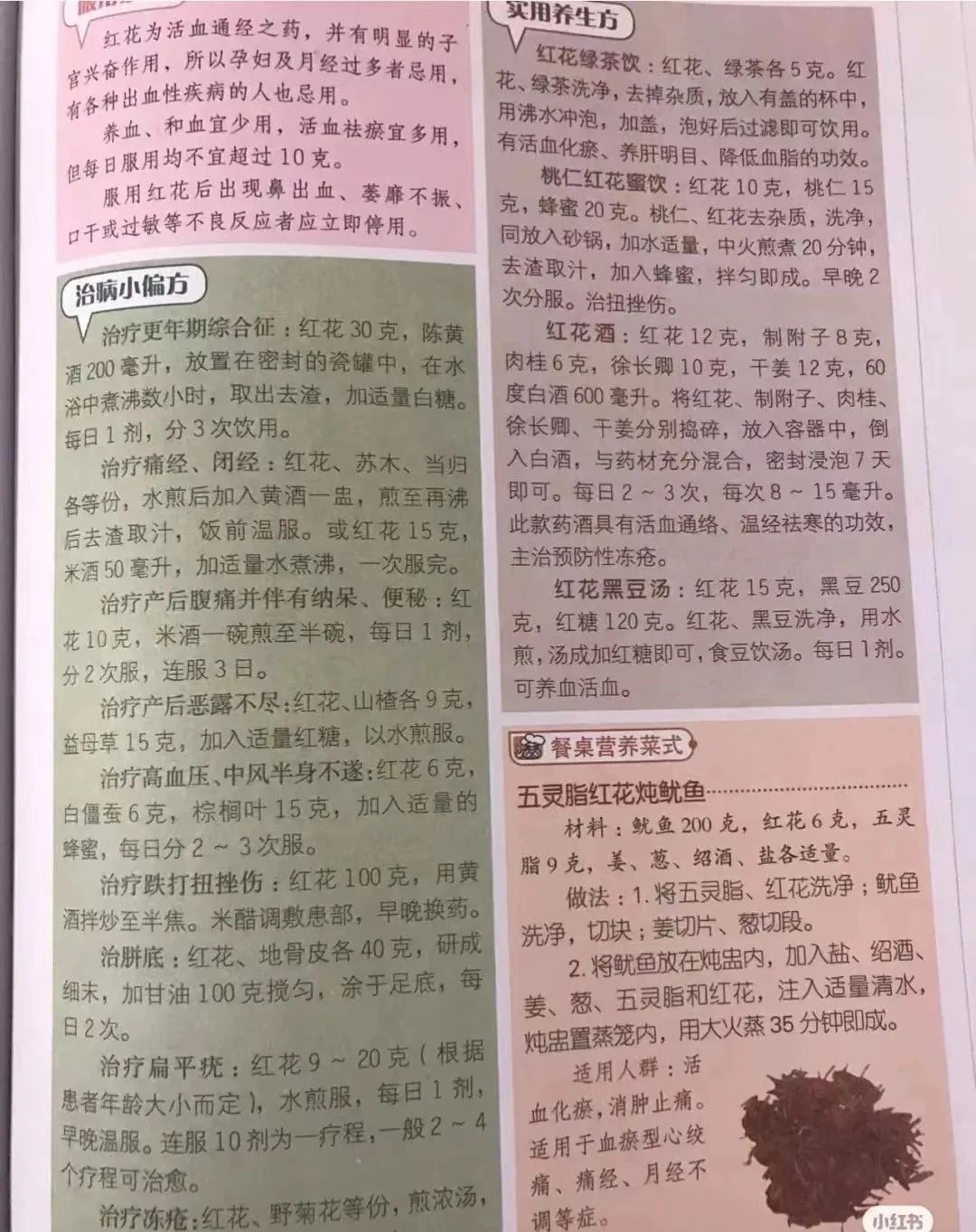
4、Safflower Wine:
Ingredients: Safflower 12g, prepared aconite 8g, cinnamon 6g, Xuchangqing 10g, dried ginger 12g, 600ml of 60-degree white liquor.
Preparation: Crush safflower, prepared aconite, cinnamon, Xuchangqing, and dried ginger, place in a container, pour in white liquor, mix well, and seal to infuse for 7 days.
Effect: Invigorates blood circulation, warms the meridians, and prevents frostbite.
5、Safflower and Black Bean Soup:
Ingredients: Safflower 15g, black beans 250g, brown sugar 120g.
Preparation: Clean safflower and black beans, boil in water, add brown sugar when the soup is ready, and consume the beans and soup.
Effect: Nourishes and invigorates blood.
6、Wulingzhi and Safflower Stewed Squid:
Ingredients: Squid 200g, safflower 6g, Wulingzhi 9g, ginger, scallions, Shaoxing wine, and salt to taste.
Preparation: Clean Wulingzhi and safflower, clean squid and cut into pieces, slice ginger, and cut scallions. Place squid in a stewing bowl, add salt, Shaoxing wine, ginger, scallions, Wulingzhi, and safflower, pour in appropriate amount of water, and steam for 35 minutes.
Applicable population: Invigorates blood circulation, reduces swelling and alleviates pain. Suitable for blood stasis-type angina, dysmenorrhea, and menstrual irregularities.
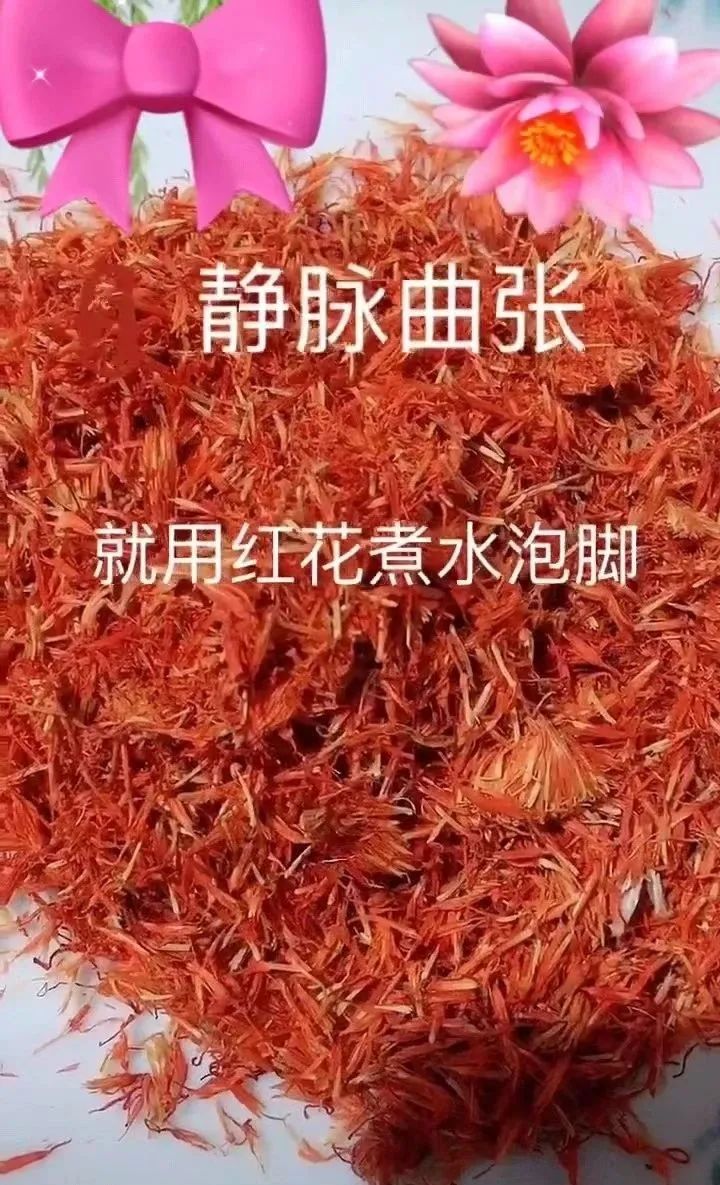
7、Safflower Foot Soak:
Safflower has a unique aroma, turns the water red, and has a slightly bitter taste. It invigorates blood circulation, disperses blood stasis, and helps treat menstrual disorders, dysmenorrhea, traumatic injuries, abscess swelling and pain, and various cardiovascular diseases. Regularly soaking feet in safflower can effectively unblock meridians, providing relief for patients with blood stasis and pain.
Foot Soaking Method:
Take a small handful of safflower, place it in a pot with a small amount of water, cover, and boil for about 10 minutes. After boiling, pour out the safflower water, add enough cold water to reach about 40°C (generally, it should not feel hot). The water should cover the ankles during the soak, which can prevent and improve frostbite; soaking for about 30 minutes is recommended.
1Women during menstruation, pregnancy, those with bleeding symptoms, and patients with hypertension should not soak their feet.
2The soaking time should not be too long, as excessive duration can increase the burden on the heart; half an hour is sufficient.
3Do not soak feet within half an hour after meals; it is best to soak an hour after eating or before bed, generally between 5-7 PM is most suitable, as the Kidney meridian is more active during this time. Do not soak on an empty stomach.
4Soak until the body slightly sweats.
5It is best to use a wooden or enamel basin for foot soaking.
6Do not soak too frequently; 2-3 times a week is sufficient, as excessive frequency is not good for the body.
7When there are new skin injuries or wounds, stop using herbal foot soaks.

8、For traumatic injuries and rheumatic pain:
Use safflower to make wine. Rubbing safflower-infused wine on joints can strengthen them. In the past, when observing the Shaolin Temple’s secret recipes, they rarely lacked safflower. This is why they could practice techniques like the Golden Bell Shield and Iron Cloth Shirt, and why they could break floor tiles; they used this medicinal wine to unblock meridians before training, allowing for quick recovery afterward.
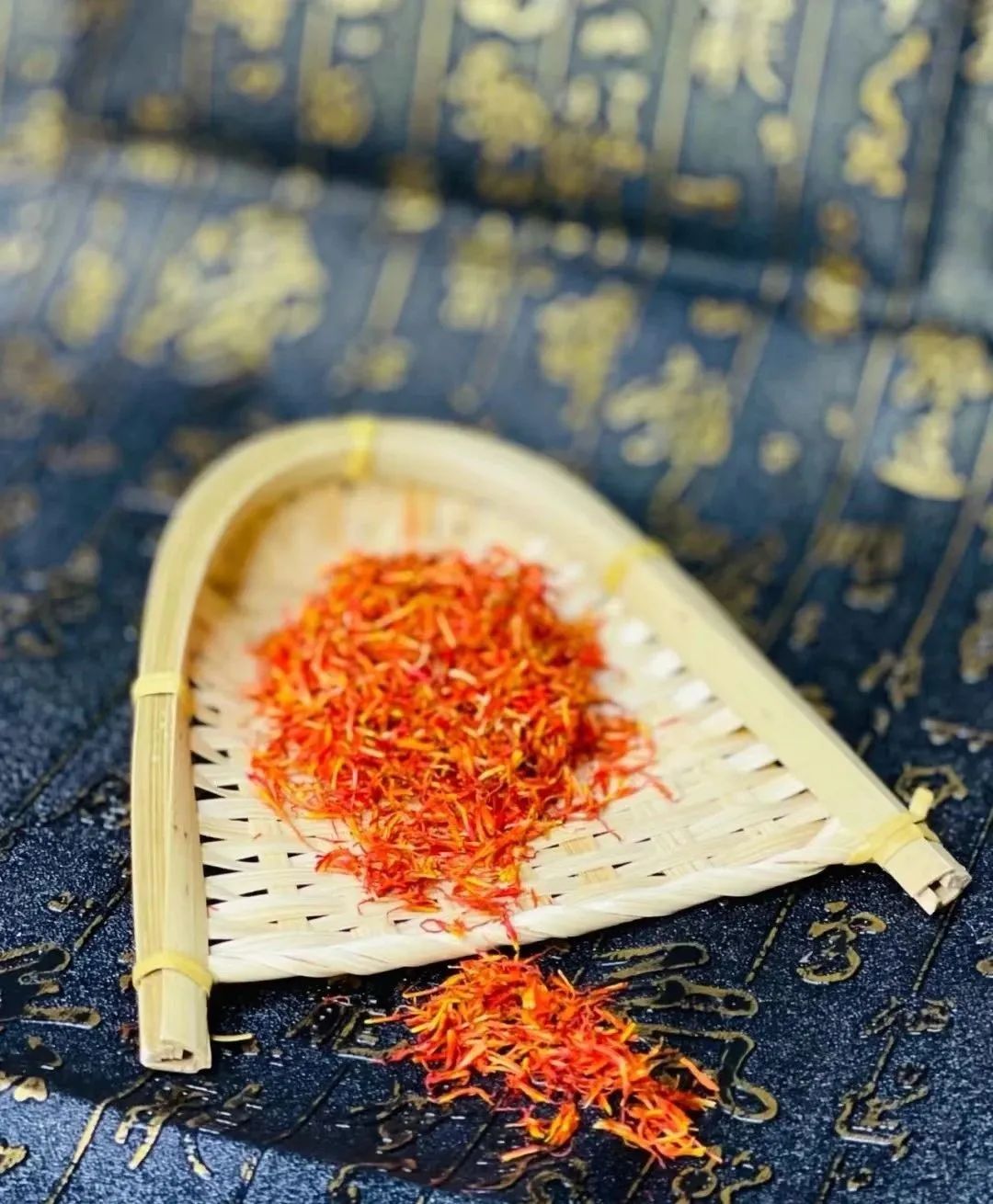
9、Safflower, Codonopsis, and Astragalus Wine:
Many people now say they suffer from work-related injuries. Keeping a bottle of medicinal wine at home can help unblock meridians after work. Drinking a small cup before and after work can double your strength and prevent injuries. For example, a patient from Anbei Village, after overworking, would be unable to work for a day or two. I advised him to use safflower, Codonopsis, and Astragalus to make wine. After soaking, he would drink a small cup before work and another small cup at night. Since then, even after a tiring day, he would feel energetic the next day and not be too tired to work.

